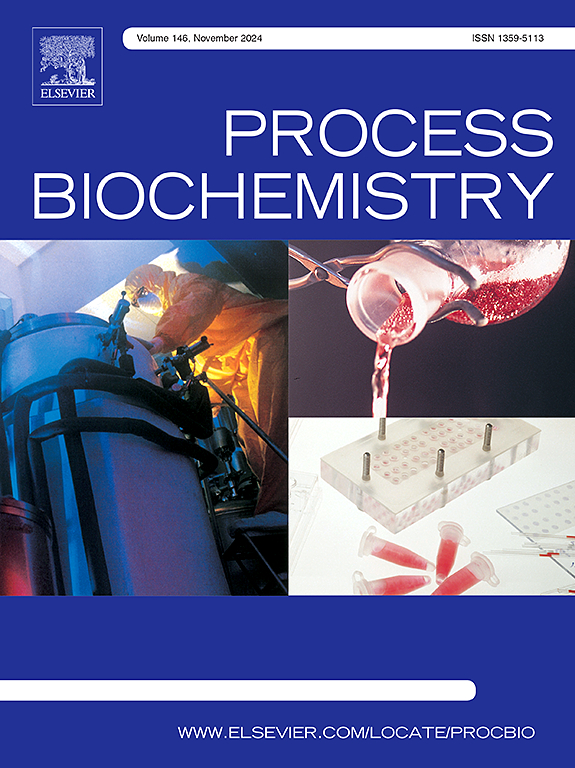Progress in chitosan-based materials: Enhancing edible coatings and films through modifications and functionalization for food preservation
IF 4
3区 生物学
Q2 BIOCHEMISTRY & MOLECULAR BIOLOGY
引用次数: 0
Abstract
Chitosan has emerged as a versatile biopolymer with significant potential in food technology, particularly for developing edible coatings aimed at preserving perishable foods. This review highlights recent advancements in chitosan extraction, modification, and functionalization, emphasizing its applications in extending the shelf life of fruits, vegetables, meat, seafood, and dairy products. Chitosan-based coatings effectively reduce moisture, oxygen, and carbon dioxide permeability, thereby delaying oxidation and respiration. Their functionality can be further enhanced by incorporating nanomaterials and bioactive compounds, which improve mechanical strength, antimicrobial efficacy, and antioxidant activity while preserving the physicochemical and sensory quality of food. The development of smart chitosan coatings, responsive to changes in pH, temperature, and humidity, offers innovative possibilities for real-time food quality monitoring. Although chitosan is generally recognized as safe (GRAS), long-term toxicity studies and regulatory harmonization are necessary to ensure consumer safety. Moreover, alternative sources such as fungal-derived chitosan present sustainable, hypoallergenic options that help address the limitations of traditional crustacean-based chitosan. Overall, the use of chitosan in food preservation not only supports improved product quality and safety but also contributes to environmentally responsible and health-conscious packaging approaches, aligning with current sustainability goals in the food industry.
壳聚糖基材料的进展:通过改性和功能化来增强可食用涂层和薄膜用于食品保鲜
壳聚糖是一种多功能生物聚合物,在食品技术中具有巨大的潜力,特别是在开发旨在保存易腐食品的可食用涂层方面。本文综述了壳聚糖在提取、改性、功能化等方面的研究进展,重点介绍了壳聚糖在果蔬、肉类、海鲜、乳制品等食品保鲜方面的应用。壳聚糖基涂层有效降低水分、氧气和二氧化碳的渗透性,从而延缓氧化和呼吸作用。通过加入纳米材料和生物活性化合物,它们的功能可以进一步增强,从而提高机械强度、抗菌功效和抗氧化活性,同时保持食品的物理化学和感官质量。智能壳聚糖涂层的开发,响应pH值、温度和湿度的变化,为实时食品质量监测提供了创新的可能性。虽然壳聚糖通常被认为是安全的(GRAS),但长期的毒性研究和监管协调是必要的,以确保消费者的安全。此外,真菌衍生的壳聚糖等替代来源提供了可持续的低过敏性选择,有助于解决传统甲壳类壳聚糖的局限性。总体而言,在食品保鲜中使用壳聚糖不仅有助于提高产品质量和安全性,而且有助于对环境负责任和注重健康的包装方法,与食品工业当前的可持续性目标保持一致。
本文章由计算机程序翻译,如有差异,请以英文原文为准。
求助全文
约1分钟内获得全文
求助全文
来源期刊

Process Biochemistry
生物-工程:化工
CiteScore
8.30
自引率
4.50%
发文量
374
审稿时长
53 days
期刊介绍:
Process Biochemistry is an application-orientated research journal devoted to reporting advances with originality and novelty, in the science and technology of the processes involving bioactive molecules and living organisms. These processes concern the production of useful metabolites or materials, or the removal of toxic compounds using tools and methods of current biology and engineering. Its main areas of interest include novel bioprocesses and enabling technologies (such as nanobiotechnology, tissue engineering, directed evolution, metabolic engineering, systems biology, and synthetic biology) applicable in food (nutraceutical), healthcare (medical, pharmaceutical, cosmetic), energy (biofuels), environmental, and biorefinery industries and their underlying biological and engineering principles.
 求助内容:
求助内容: 应助结果提醒方式:
应助结果提醒方式:


